A. Executive Summary
We respectfully ask the Council to Pass Bill 37-19 without amendments for 3 reasons:
1. Our Unique History of Development Set the Stage for an Enormous Open Space Deficit
Beginning with the Great Depression and the severe housing shortage that ensued, history and policy created our inner suburbs with little concern for open space and walkability. With the advent of the 1st Eisenhower Beltway, the Plan for the Valleys, and the Urban Rural Demarcation Line, we created a densely populated area where the only real check on development was single-use or “Euclidean” zoning, which separates uses and has contributed to places that are, at best, somewhat walkable, today. It was not until the latter part of the 20th century that we began to require developers to set aside 1,000 square feet of open space per dwelling unit, but by that time much of our green space had disappeared and our stream valleys and unique landscape features were threatened.
2. The Deficit is Both Unresolved by Current Law and Driving Other Challenges
Sixty-five percent of residences inside the URDL lack access to adequate open space within a quarter mile walk, according to analysis done by NeighborSpace in cooperation with the National Park Service. Looking at a similar, independent measure, 13 of 16 inner suburbs (81%) fall below the national average of 54% on the Trust for Public Land’s ParkScore, a measure of the percentage of a town’s population that can walk to a park within 10 minutes.
These shortcomings have, in turn, contributed to poor water quality, with all but one watershed in the county being impaired by sediment and/or nutrients. In addition, home values, which can be buoyed by well improved open space, have fluctuated between 2nd and 3rd from the bottom among metro-Baltimore jurisdictions over time.
3. The Processes by Which We Create and Enforce Open Space Laws Raise Questions of Equity, Parity, and Fundamental Fairness That Bill 37-19 Begins to Address
With respect to equity, a strong development lobby has fought the requirement to provide 1,000 square feet of open space per dwelling unit or pay a fee forever. It has winnowed away at it with provisions like the 60% reduction for private amenities and the parking islands deduction, balancing great things for newcomers in new construction on the backs of current residents, most of whom are not as well-heeled and are living in much older homes in places where open space is sorely lacking.
As for parity, there are studies that show that the fees that the county is apparently using, dating to 2013, are well below the average impact fees in Maryland. There can be no argument, therefore, that without a subsidy projects and developers will suffer when doing business in Baltimore County.
In addition, fundamental fairness demands that opposing sides present their arguments publicly and that laws, once made, are enforced. At the time appointed for debating Bill 37-19, the Md. Building Industry Association (MBIA) made no real, defensible arguments against the bill’s enactment. NeighborSpace and other proponents, on the other hand, marshalled considerable testimony in support of its enactment and have since learned of a lot of lobbying that has happened behind closed doors by MBIA. If MBIA has sound reasons for opposing the legislation, why did it not produce those arguments during the work session so that the bill’s proponents could address them?
There is also the fact that some developers and some County staff have thumbed their noses at legislation passed by the Council, directly subverting the law because they do not agree with it. That can be given no quarter and for this and the foregoing reasons, we ask the Council to pass the bill without amendments.
B. Why History, Policy Outcomes, and Fundamental Fairness Demand Passage of the Bill Intact
-
Our County’s Unique History
As noted in yesterday’s podcast, Baltimore County is unique among most other jurisdictions in Maryland owing to how it developed. A severe housing shortage that began with the onset of the Great Depression was exacerbated by America’s entry into World War II, federal guarantees of private loans, available capital under the GI Bill, the federal mortgage interest tax deduction, and new mass production techniques that lowered the cost and shortened the time to build the average home, led to a suburban building boom in the U.S. that generated the first-tier or inner suburbs in 29 metropolitan areas, including Baltimore.
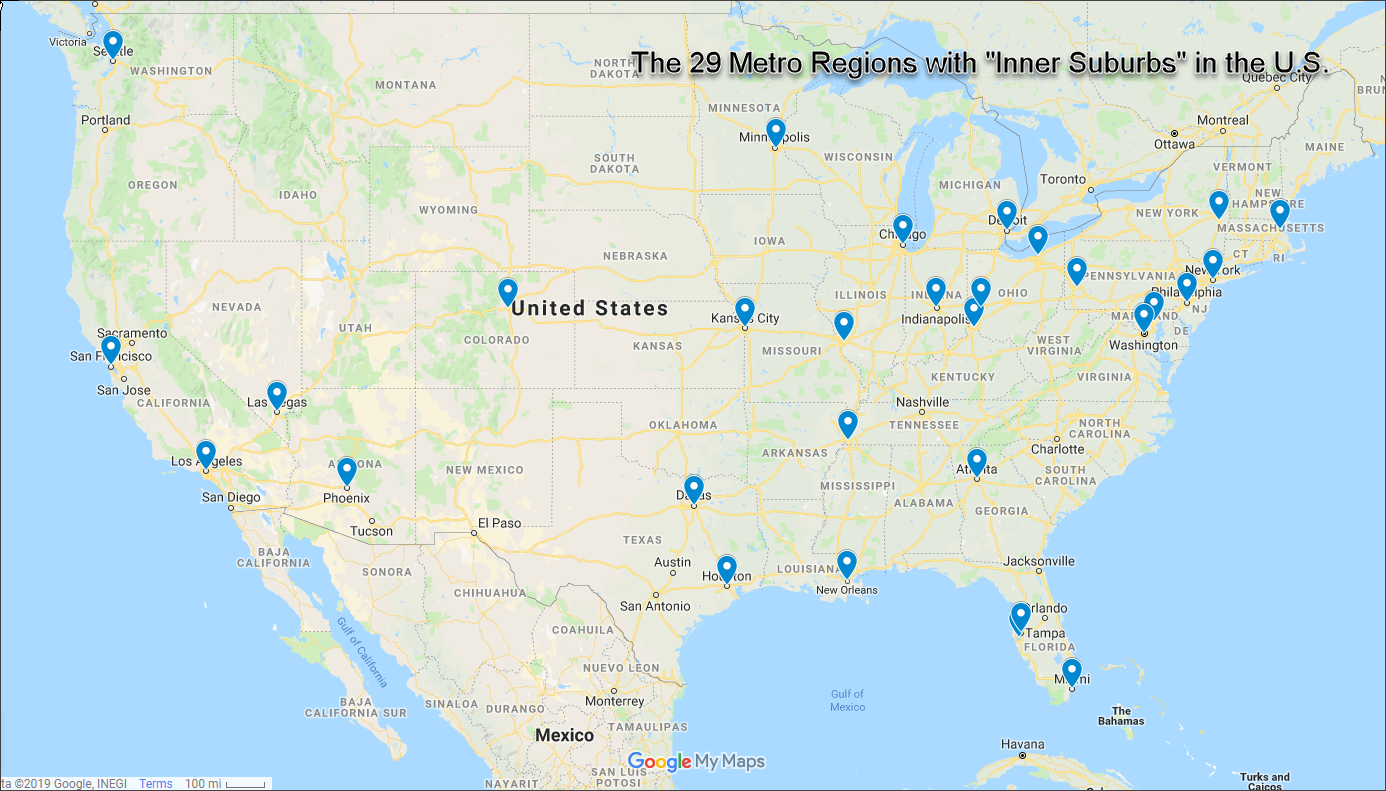
The only check on this development was Euclidean, or “single-use” zoning, which separates uses and contributes to low walkability. The first Eisenhower Beltway in the nation provided yet another reason to move to Baltimore County. Thereafter, the Plan for the Valleys, and the resulting Urban Rural Demarcation Line, contributed to incredible population density and the fact that today, 90% of the County’s population of 836,000 people lives inside the URDL on just 1/3 of the total land area. In essence, more people live inside the URDL surrounding Baltimore City today than live in the City itself.
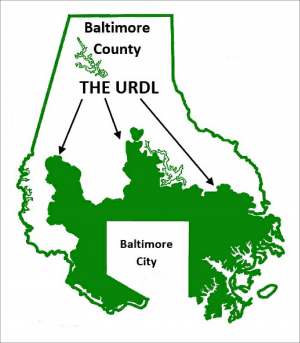
Unlike Baltimore City, where Frederick Law Olmsted and his sons, Frederick, Jr. and John, laid out detailed plans for protecting stream valleys with parks and connecting them with parkways and greenways, Baltimore County had no real plan for the protection of parks and open space. It was not until the latter part of the 20th Century that Baltimore County passed a law requiring developers to set aside 1,000 square feet of open space per dwelling unit. But by that time, a lot of land had been developed, and, owing to the rapacious pace of land consumption with few controls, a litany of first-tier suburbs were constructed abutting the City line. They became densely populated but were also lacking in open space and low on walkability, with few achieving a walkscore over 50 on a scale where 0 is unwalkable and 100 is a walker’s paradise.
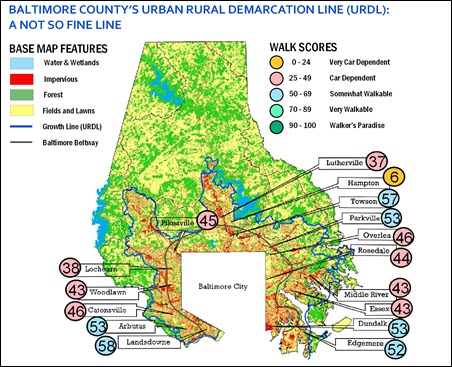
-
Policy Outcomes
The outcomes of current open space policy on the livability of communities inside the URDL aren’t good. NeighborSpace analysis, conducted in conjunction with a grant of technical support from none other than the National Park Service, shows that 65% of residences inside the URDL lack access to adequate open space within a quarter-mile walk.
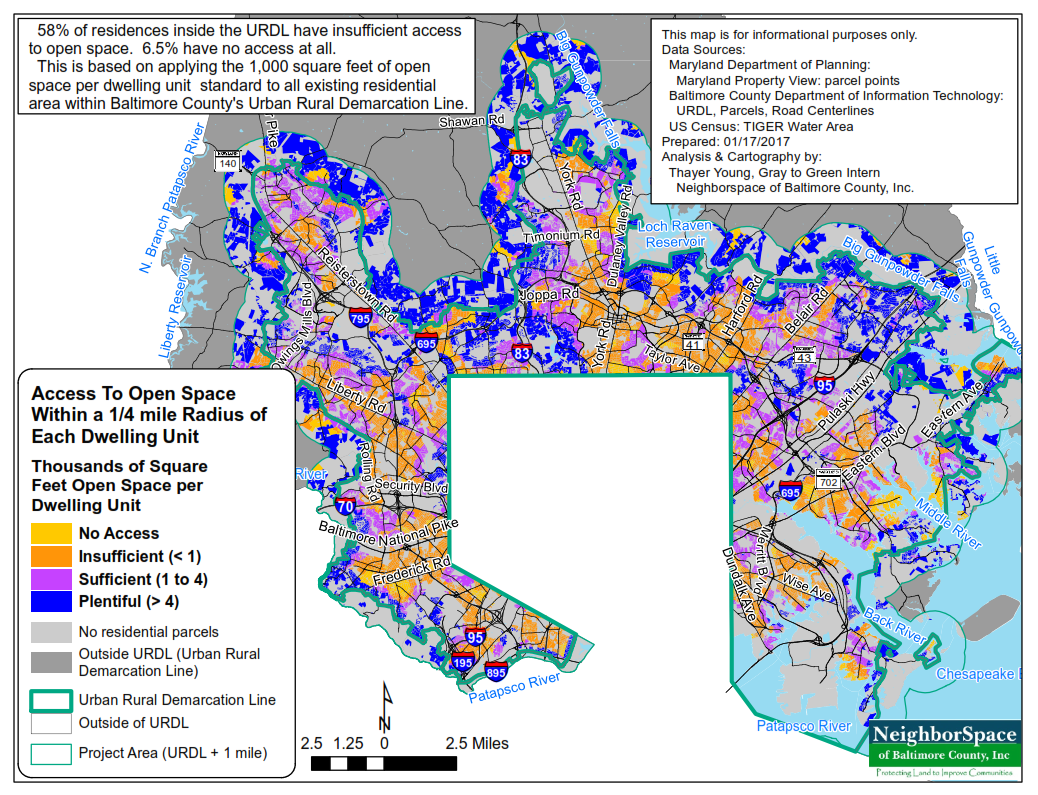
Viewed according to another measure, 13 of 16 (or 81%) of our inner suburbs fall below the national average parkscore of 54%, which is the Trust for Public Land’s measure of the percentage of a town’s population that can walk to a park within 10 minutes.
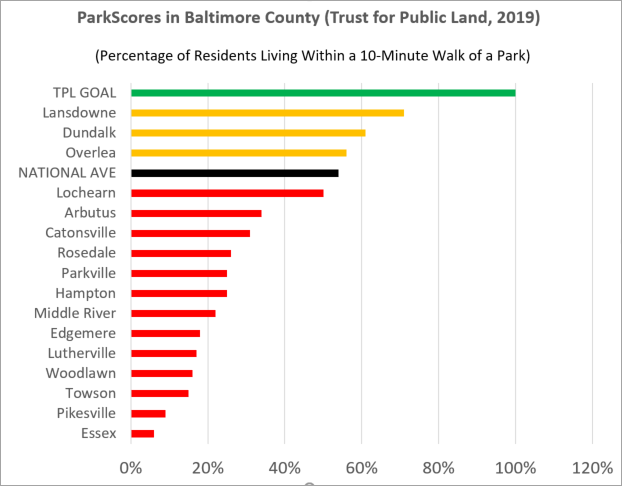
Our failure to protect open space and buffer our streams has had a truly deleterious effect on water quality in the County. All but one watershed inside the URDL is impaired by sediment and/or nutrients.
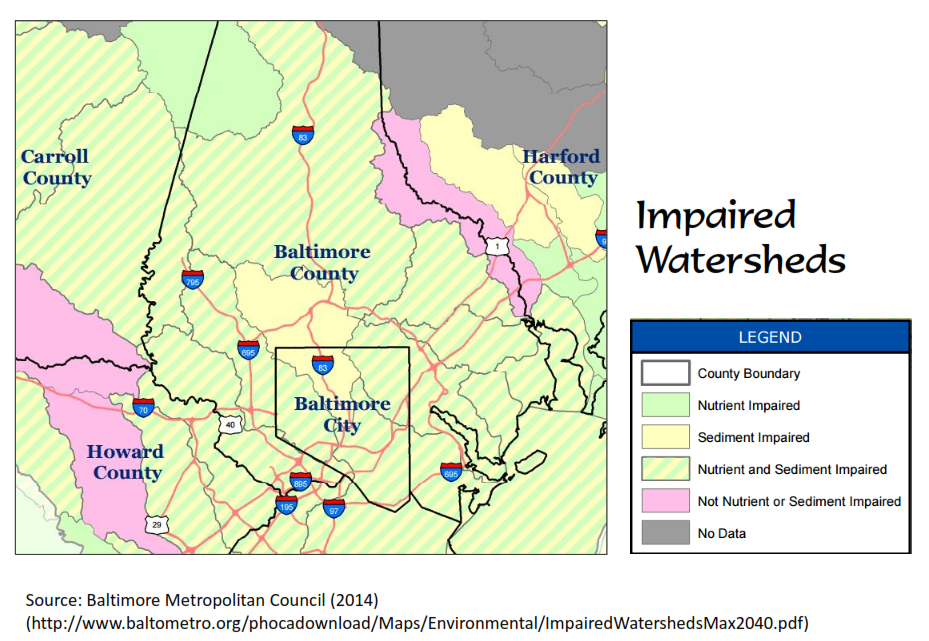
Property values in the County tend to fluctuate between 2nd and 3rd from the bottom of the pile over a 10-year period. Think about the most valuable real estate in New York City and the origins of that value (Hint: It has something to do with being near Central Park). Think, also, about the fact that over fifty-percent of our housing construction is pre-1970.
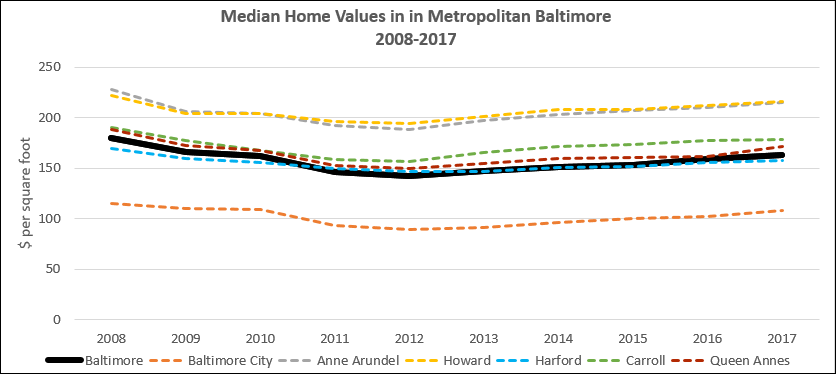
These challenges, added to those of a 2008 study of the County’s socioeconomic problems, do not bode well for our future. That book, Transforming Race and Class in Suburbia, Decline in Metropolitan Baltimore, chronicles changes in Baltimore County’s Inner Suburbs between 1970 and 2000. It describes evidence of suburban decline in our county in four principal areas, including (1) population characteristics; (2) income dynamics; (3) housing stock; and (4) labor market structure. It concludes that “[w]ithout a doubt, Baltimore County … [has] reached a crossroads. The road to more decline may be an easy path to follow. It requires doing nothing and maintaining the status quo. The road to success depends on the political and social willingness to confront the decline of its suburbs. Ultimately, the fate of first-tier suburbs rests with the people who call them home.” Many of those people spoke last Tuesday from the heart, begging the Council to pass Bill 37-19 without watering it down and many represented organizations whose boards have formally signed on to support the bill:
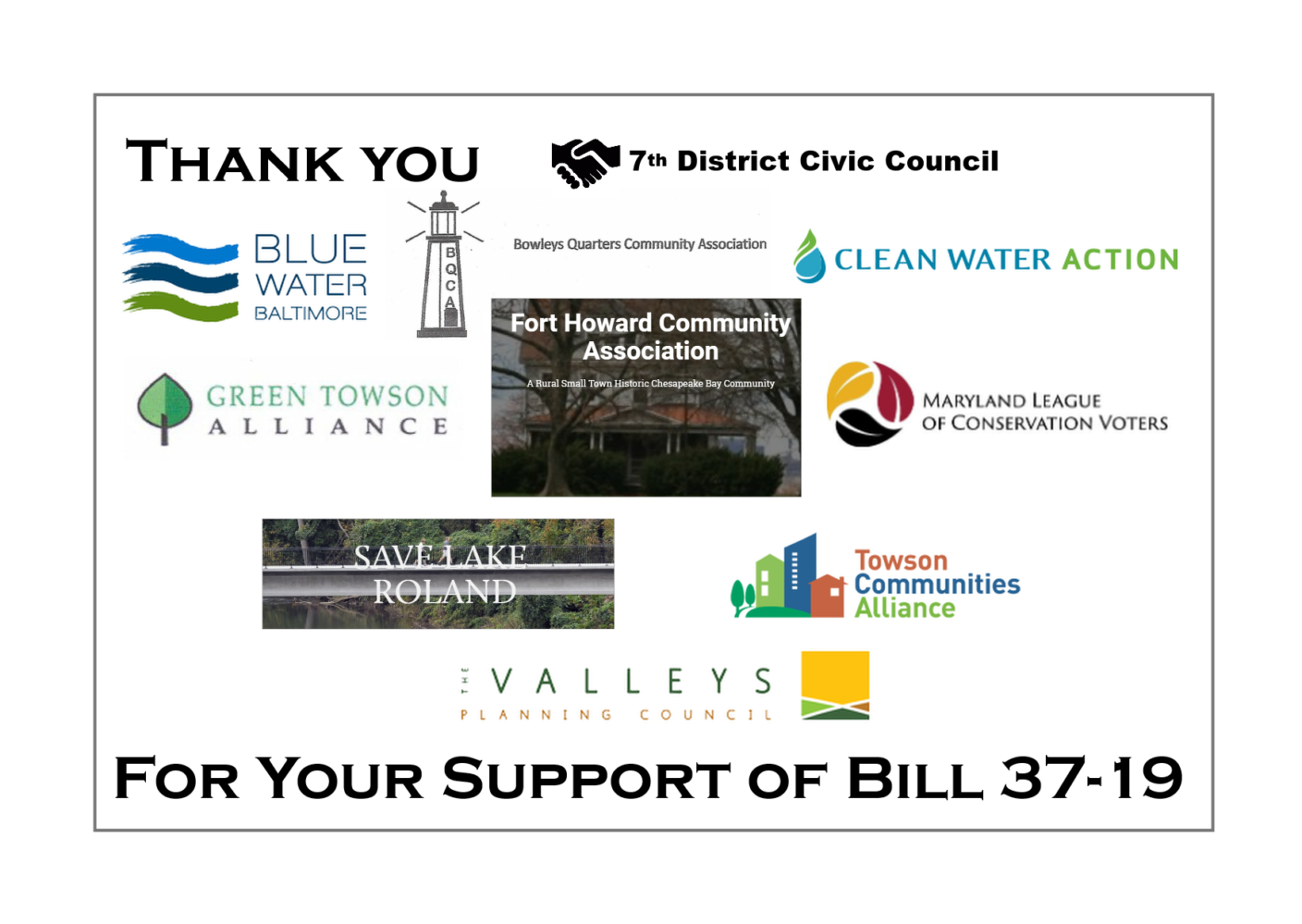
-
Fairness
The case for fairness of our laws and our processes for making and enforcing them are perhaps the simplest ones to make.
a. Equity
First, there is the equity argument: the fact that significant numbers of people on the lower economic strata (e.g., many people living on the east and west sides of the county) who are most likely to lack access to adequate open space are being asked to subsidize the amenities of people of means, like those who are projected to occupy new construction like that proposed as CPC Falls Road. Such a result is hugely inequitable.
b. Parity
Second, there is the parity argument, how the fees Baltimore County is charging compare to fees charged across all other Maryland jurisdictions. A 2015 study of impact fees nationally shows that the average single-family impact fee in Maryland was $11,486 per dwelling unit. What Baltimore County is charging appears to be far below that number. There is, therefore, absolutely no need to subsidize amenities in order for developers to compete in other jurisdictions, especially when it’s done on the backs of those who have both much less money and little or no open space within a quarter mile of home.
c. Lack of Evidence Presented
Third, developers presented next to no evidence in the work session held on August 27 that the bill should not pass as written. Their points were (1) if the fees aren’t subsidized, we won’t be able to compete with or jurisdictions; (2) only 3 years have passed since the law was amended; there’s no evidence of a problem and not enough time for us to pull numbers together; (3) there was a lack of collaboration between MBIA and what it calls “community advocates.” None of these hold any water whatsoever, something we discussed in this post and in the instant article.
d. Respect for the Council and for the Law
Finally, some developers aided by some County staff have thumbed their noses at open space laws passed by the County Council. The previous administration never put forth a fee schedule aligning with the tiers contained in the law that passed in 2016. It did not file and post reports on fees collected and assessed, as required in 2014, until 2018. When it did report, it was impossible to tell how the fees were calculated and on what costs the waivers were based, all in violation of the law. As recently as April 2019, County staff and developers’ consultants testified under oath in an administrative proceeding that the purpose of the open space law was to allow developers to amenitize their developments, in spite of the plain meaning of our law, accessible to anyone with a third-grade education, that providing open space is the paramount requirement. This disgusting and disrespectful behavior should be given no quarter.
For these and the foregoing reasons, we urge the Council to pass Bill 37-19 as written. Do not water it down based on unsubstantiated claims that have had no public hearing. Consider, rather, what was presented by those who took the time to prepare for and participate in the hearing, along with the plight of those less fortunate whose circumstances prevented them from being able to make their voices heard.
Pingback: Bill 37-19 Vote Tonight September 3, 2019